Ever wondered how your footwear is made? Phorum Dalal and photographer Pradeep Dhivar visit a shoe factory at Dahisar and document the process from start to finish

The process of upper making is also called closing and includes the method of manually attaching embellishments, sticking straps, stitching buckles and hooks
The acrid smell of leather and rexin intermingled with that of rubber, glue and cloth hangs in the air at the 20,000 square foot shoe factory, G-Shoe Export, at Dahisar.
ADVERTISEMENT
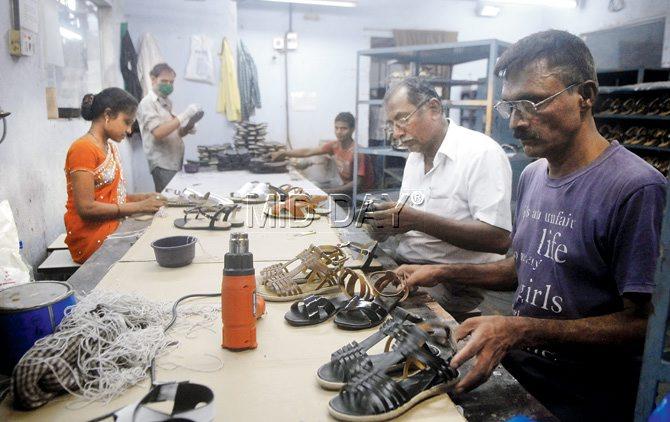
Workers at G-Shoe Export at Dahisar. Pics/Pradeep Dhivar
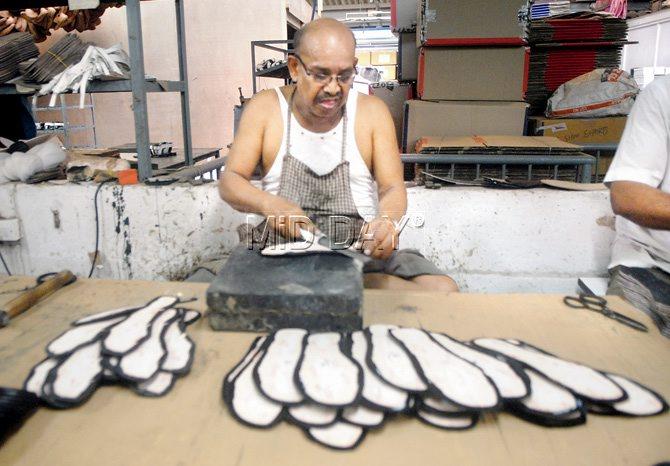
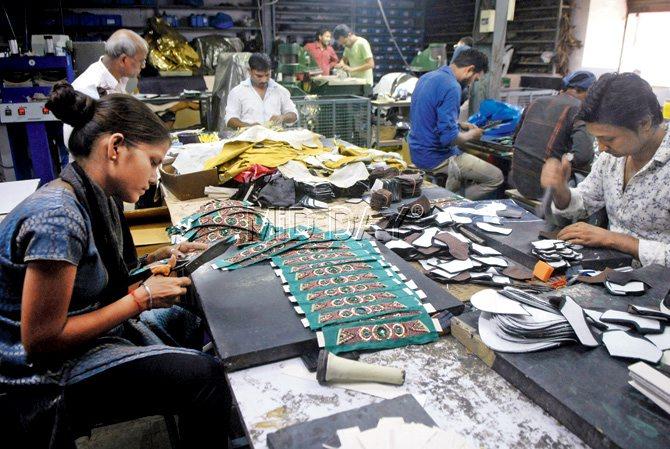
The process of upper making is also called closing and includes the method of manually attaching embellishments, sticking straps, stitching buckles and hooks
Around 150 workers, spread across the two-storeyed area, bend their heads over their tables, working their hands at cutting materials, making upper parts of a shoe — the body and straps, bottom parts — soles, insoles and heels and give finishing touches to ready the final product.
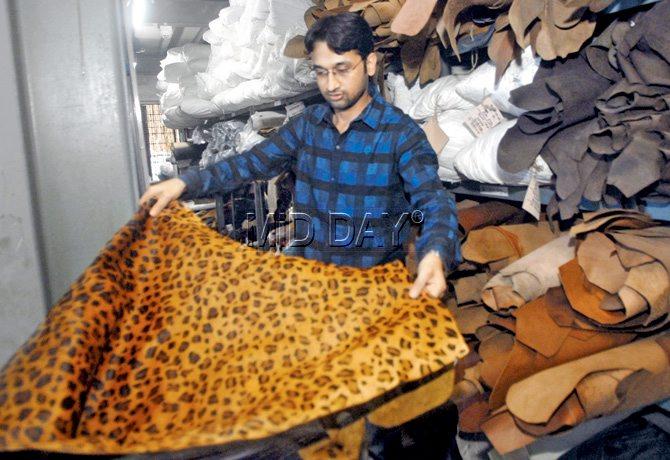
Each and every piece is thoroughly checked for growth marks, wear and tear. The faulty sections are avoided during the first production step — cutting
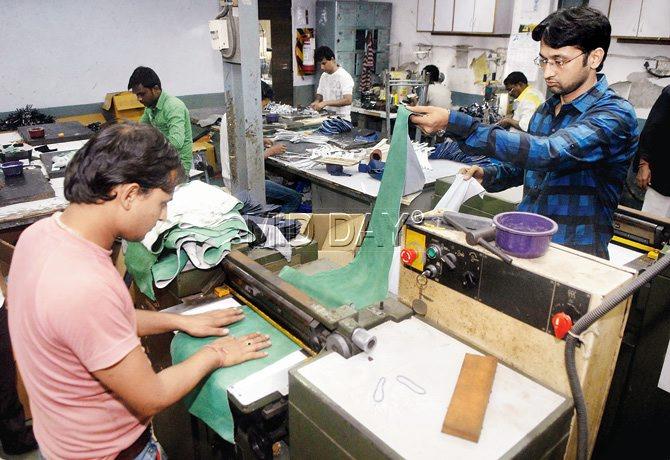
The inspected material is then passed through a process called splitting, where excess layers in a fabric are removed. This is then sent for cutting
Sahil Kejriwal, director of the company, manufactures and exports footwear for international brands, and makes his own brand of footwear for men called Estd 1977, which is known for its gladiators and huaraches.
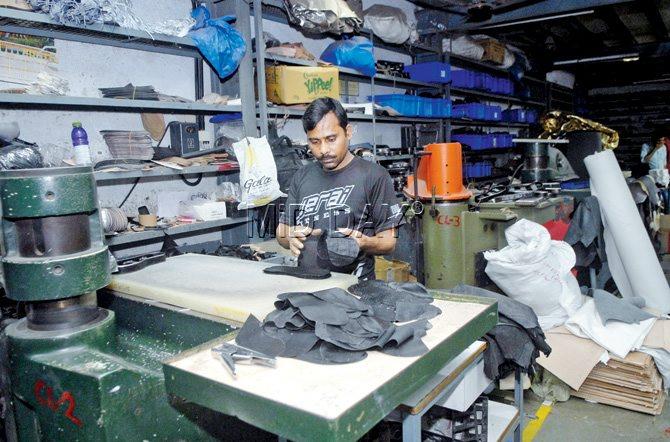
A labourer inspects a piece of leather, which will be cut to the desired shape and pasted on insoles
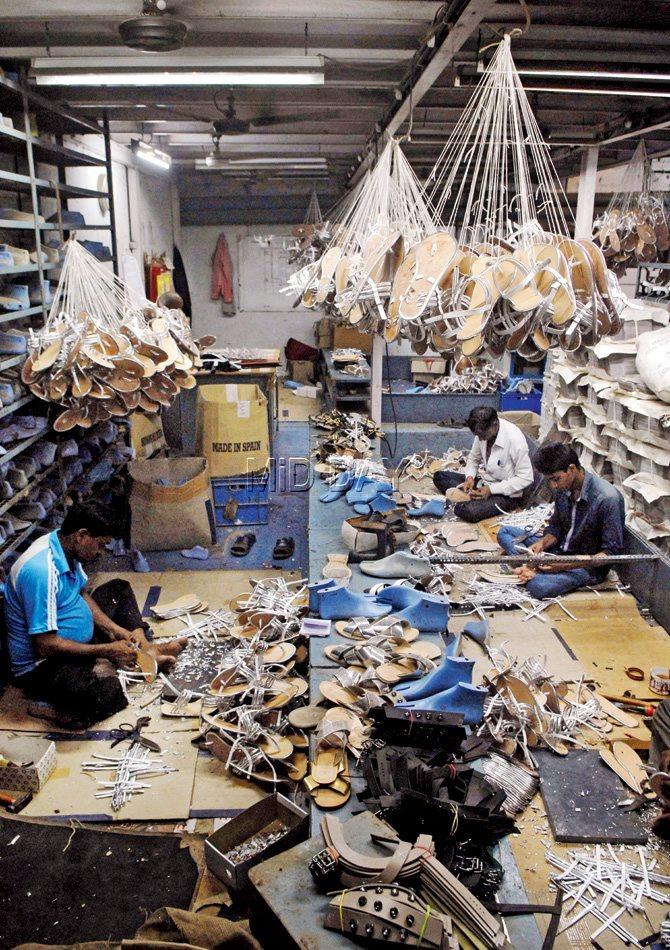
In a process called lasting, a mould is fitted into the insole and upper to give it a proper shape. This ensures the piece is made wearable by opening it to the desired height of a foot to slip in. They are then hung in batches to ensure they don’t get wrinkled
We visit the factory on a busy day and Kejriwal has just enough time to give us a quick tour, after which he leaves us in the able hands of his product manager Shailesh Singh, who has been working at the factory for the past eight years.
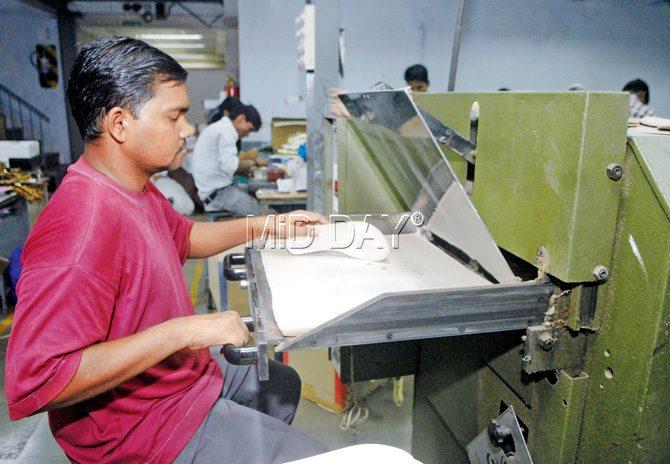
A worker passes soles into a plating machine which is set at a fixed temperature. This process smoothens the sole and gives it an even finish
“The basic process of making a shoe begins with cutting, splitting, plating, upper making or closing, bottom or insole making, sole making, lasting, pasting, grinding, finishing and packing,” Singh tell us, guiding us to the inspection department where the raw material (leather, rexin) is stored and checked for pinch holes or cut marks and growth marks.
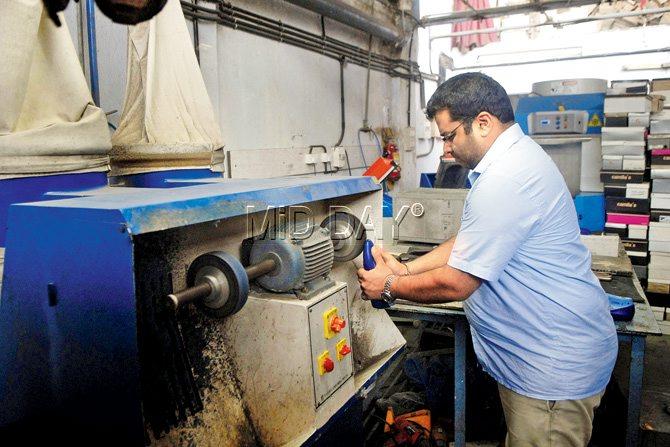
Sahil Kejriwal carries out the process of roughing, which makes it easier to stick or attach the bottom parts (sole and heel) to the upper body of the shoe
“The faulty sections are rejected during cutting. Here, swatches of leather are made for customers to choose,” says Singh, as we pass through the R&D department where single pieces of designs are made for buyers.
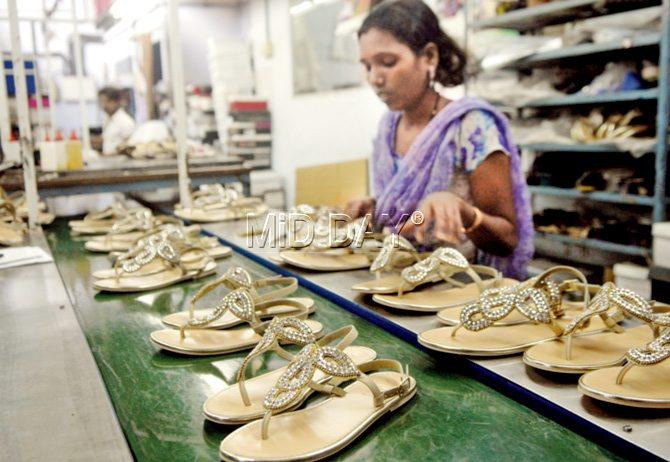
A worker checks each piece for dangling threads, missing embellishments etc in the finishing process
2,500 pairs in a day
Once we step into the work unit, a cacophony of sounds hits our ears — the buzzing of the sewing machine, the humming of cutting and stamping machines; but there is a fine balance in the chaos, as parts of the shoes are passed from one unit to another in an organised manner to form the final product. In a day, around 2,500 pairs of shoes are made here.
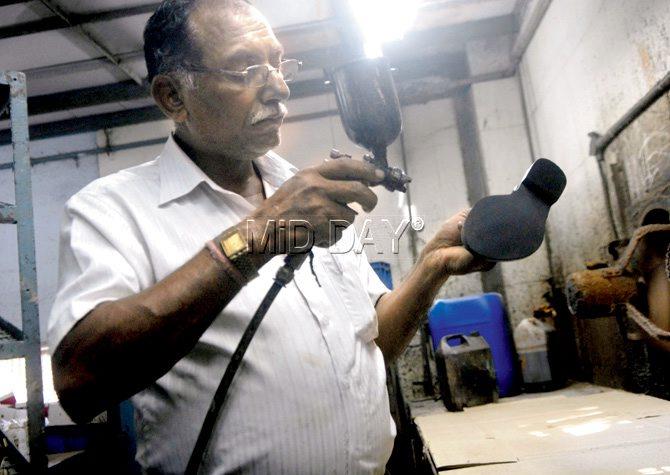
A worker sprays a chemical to give the finished product a shine. After this, the pieces go for 100 per cent inspection
While it takes us a while to thoroughly understand the technical workings at the beginning of the tour, by the end, we are left in wonderment at the ‘feat’.
 Subscribe today by clicking the link and stay updated with the latest news!" Click here!
Subscribe today by clicking the link and stay updated with the latest news!" Click here!






